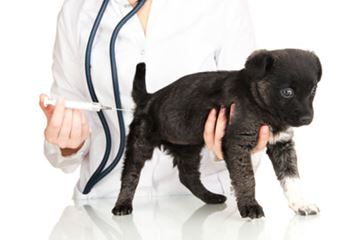
Prevention of dogs and cats is the most important part of maintaining the health of pets. Infectious diseases that pose the greatest threat to the health of the pet most often are caused by viruses, bacteria, fungi, protozoa, and rickettsia.
Mode of transmission of infectious diseases is different, usually by direct contact, infected body fluids and inhalation of infectious agents. Since infectious diseases pose the greatest danger to the health of young animals, and bring them up to death, the only real protection is vaccination of animals in order to prevent the development of disease.
Vaccination of dogs and cats body to stimulate the production of specific antibodies. There are two types of vaccines, one containing modified live viruses and vaccines containing inactivated viruses and dead. It should be noted that although young dogs and cats vaccinated may cause disease. This is much more related to youth dogs than cats.
Until the appearance of the disease in young dogs usually occurs due to improper storage of vaccines, providing the wrong vaccine, premature or too late administration of the vaccine, the vaccination lapsed durability, giving lower doses, but can also be a dog does not respond to adequate immune response after vaccination.
Dogs and cats are vaccinated should be healthy and only in them can reach an adequate immune response after vaccination. For this reason, before vaccination the veterinarian must take a general clinical examination of the animals.
Infectious diseases of dogs that are mandated vaccinations are rabies, distemper, parvovirus infection, infectious hepatitis dogs, leptospirosis and parainfluenza.
Infectious diseases cats that are mandated vaccinations are rabies, feline panleukopenia, feline calici virus, feline rhinotracheitis. Also it should be noted that it is possible in cats vaccination against FeLV-a – feline leukemia to risk categories for feline AIDS virus, ie. Fiv no vaccine so for this type of infectious disease only castration or sterilization of an adequate risk categories prevention.
